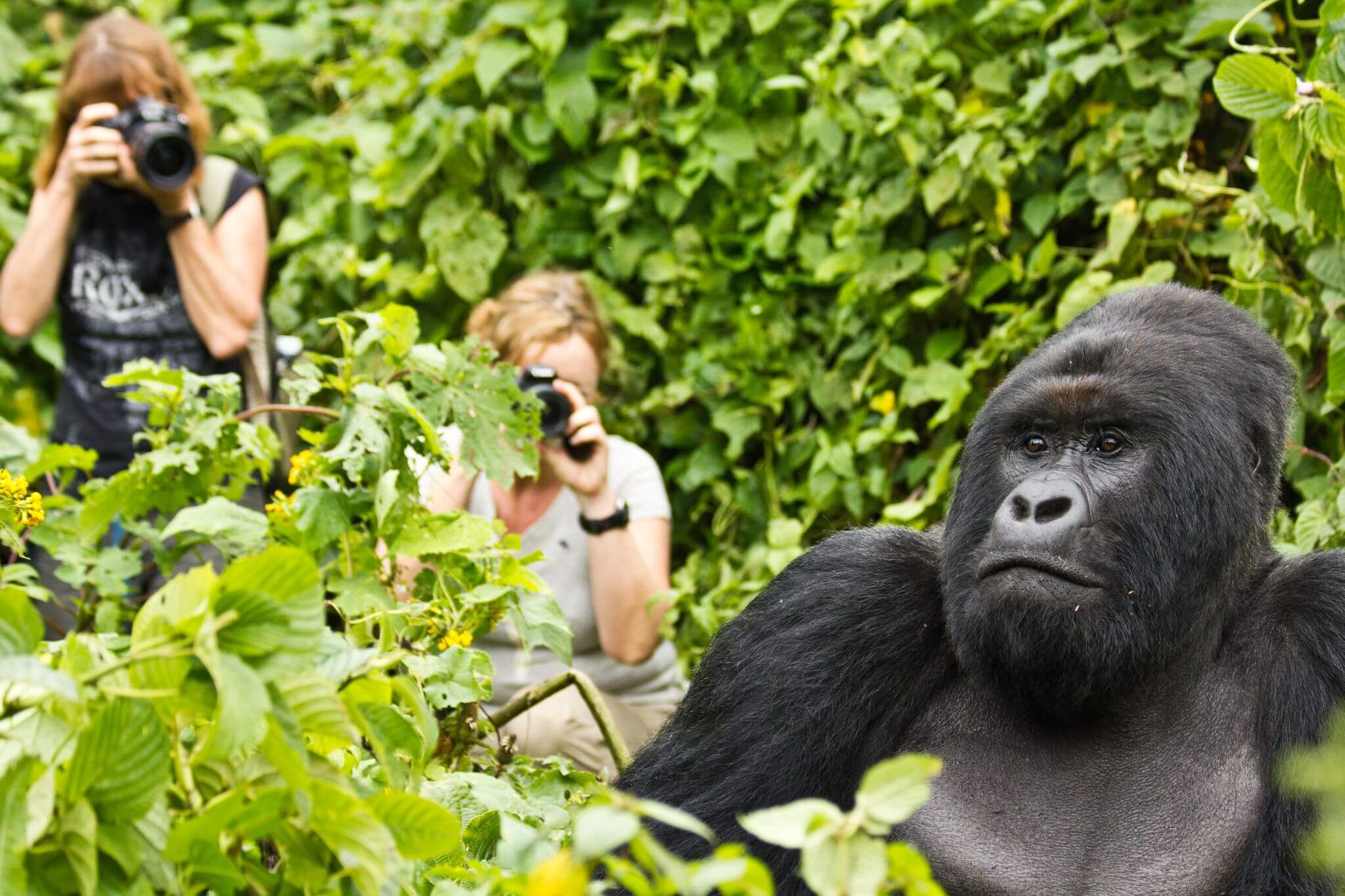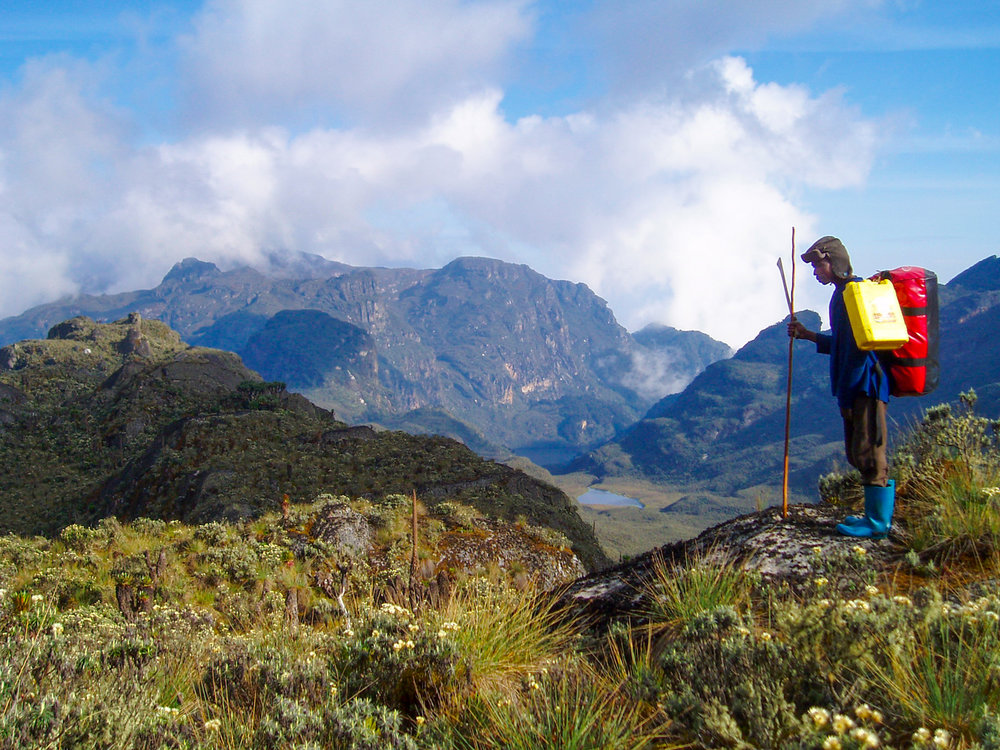Top 10 Must-See Animals On Your Uganda Wildlife Safari
Uganda, often called the Pearl of Africa, offers one of the most diverse and intimate wildlife experiences on the continent. From misty mountain forests to sprawling savannas, this East African gem is home to some of the world’s most incredible creatures. Whether you’re a seasoned safari enthusiast or planning your first African adventure, here are the top 10 must-see animals that should be on your Uganda wildlife safari bucket list.
1. Mountain Gorillas

No visit to Uganda is complete without encountering the majestic mountain gorillas. With roughly half of the world’s remaining population residing in Bwindi Impenetrable National Park and Mgahinga Gorilla National Park, Uganda offers the ultimate gorilla trekking experience. Watching these gentle giants in their natural habitat, observing their complex social interactions and remarkable human-like behaviors, is a profound and emotional experience that consistently ranks among the world’s greatest wildlife encounters.
The trek through dense montane forests can be challenging, but the moment you lock eyes with a silverback or watch playful juveniles tumble through the undergrowth makes every step worthwhile. Gorilla permits are limited to preserve these endangered primates, so booking well in advance is essential.
2. Chimpanzees
![]()
Uganda is a primate paradise, and chimpanzees are the stars of several national parks. Kibale Forest National Park, often dubbed the primate capital of the world, offers the best chimpanzee tracking experiences. With over 1,500 chimps in Kibale alone, your chances of encountering these intelligent, charismatic apes are excellent.
Watching chimpanzees swing through the canopy, groom each other, and communicate with their distinctive pant-hoots and screams provides fascinating insights into our closest living relatives. Their complex social structures and tool-using abilities never fail to captivate observers. Kyambura Gorge in Queen Elizabeth National Park and Budongo Forest also offer remarkable chimp tracking opportunities.
3. Tree-Climbing Lions
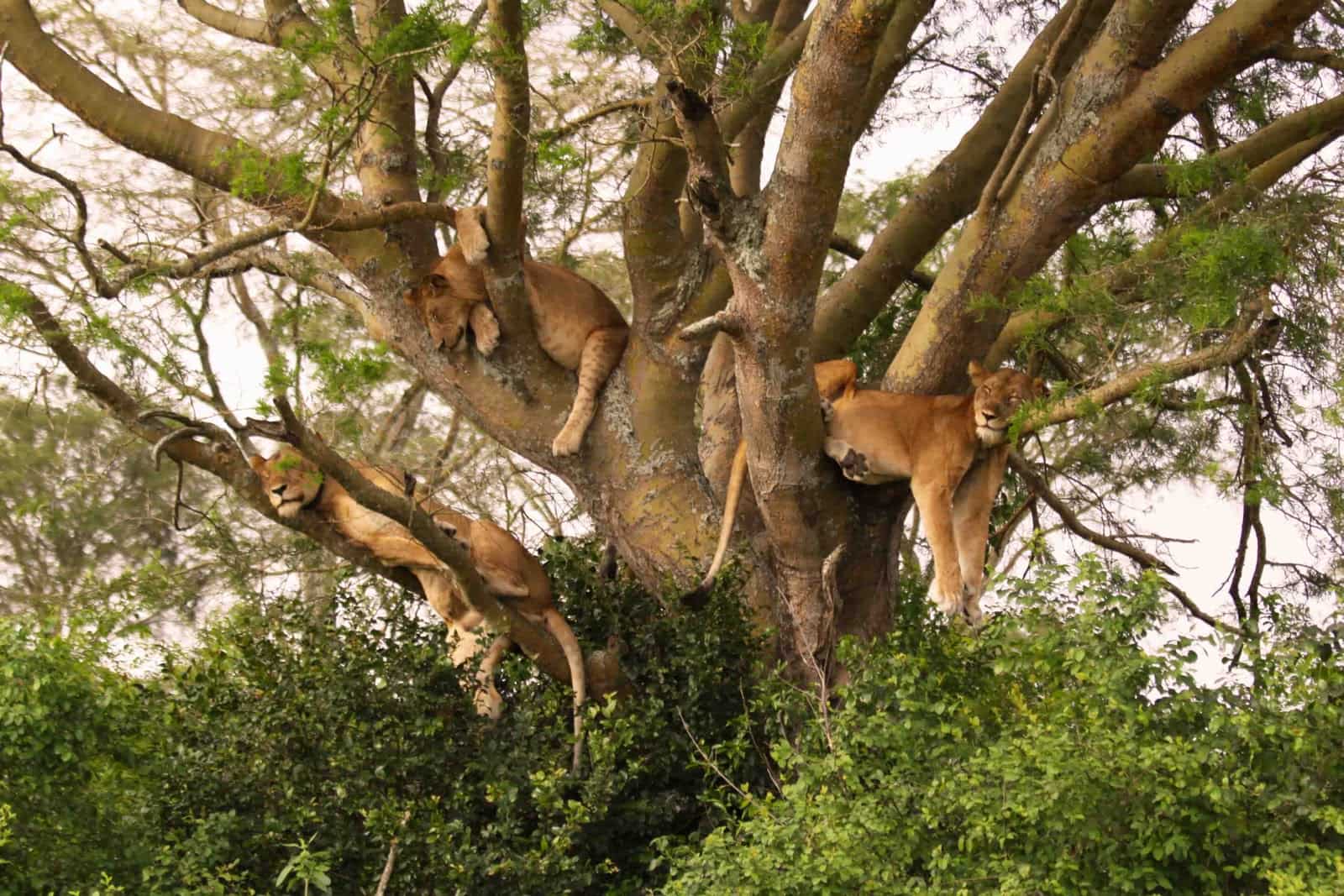
One of Uganda’s most unique wildlife phenomena is the tree-climbing lions of Queen Elizabeth National Park, specifically in the Ishasha sector. While lions occasionally climb trees in other parts of Africa, the Ishasha lions have made it a distinctive behavior, often spending entire afternoons lounging on the branches of large fig and acacia trees.
Theories suggest they climb to escape the heat and biting insects on the ground, or to gain a better vantage point for spotting prey. Witnessing these powerful predators draped across branches, sometimes several in the same tree, creates an unforgettable photographic opportunity and a story you’ll tell for years to come.
4. Shoebill Stork
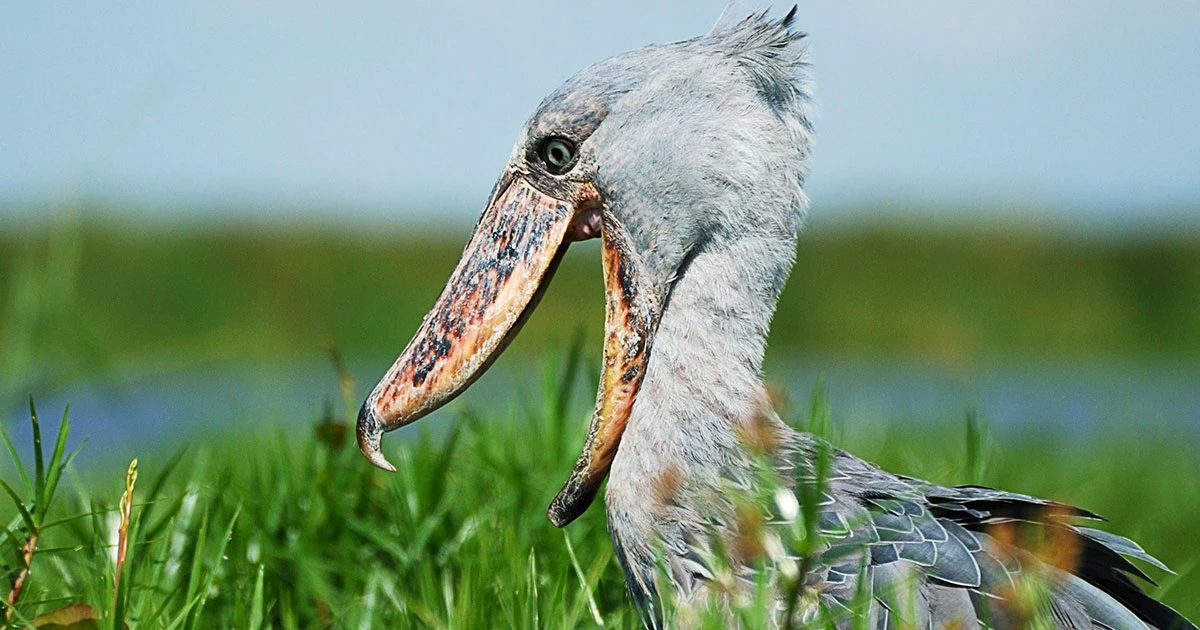
The prehistoric-looking shoebill stork is one of Africa’s most sought-after bird sightings, and Uganda offers some of the best opportunities to see this remarkable species. Standing up to five feet tall with a massive shoe-shaped bill, this bird looks like it walked straight out of the dinosaur age.
Mabamba Swamp near Entebbe and the marshes of Murchison Falls National Park are prime locations for shoebill encounters. These solitary birds stand motionless for hours while hunting, then strike with lightning speed to catch lungfish and other prey. Their slow, deliberate movements and intense gaze create an almost otherworldly experience for birders and wildlife enthusiasts.
5. African Elephants
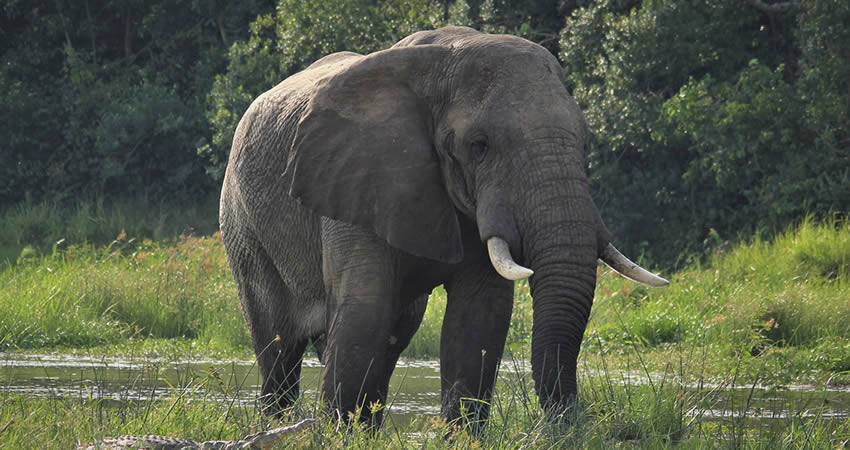
Uganda’s elephant populations have made a remarkable recovery from the dark days of poaching in the 1970s and 80s. Today, you can encounter impressive herds in several national parks, with Murchison Falls and Queen Elizabeth National Parks offering particularly excellent elephant viewing.
Watching elephant families interact at waterholes, seeing protective mothers shepherd their calves, and observing the incredible intelligence and emotional depth of these giants provides powerful safari moments. The diverse habitats of Uganda mean you might see elephants in savanna grasslands, along riverbanks, or even near forest edges, offering varied photographic opportunities.
6. Rothschild’s Giraffes
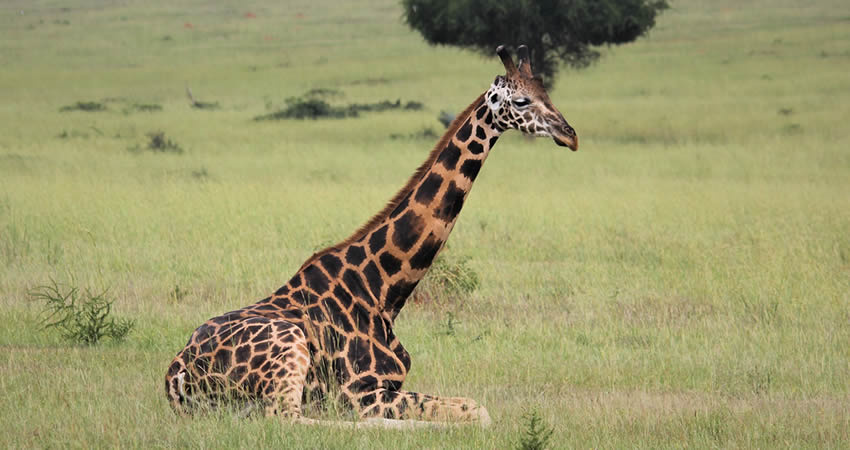
The endangered Rothschild’s giraffe, also known as the Ugandan giraffe, is a critically important subspecies with distinctive markings and no spots on their lower legs. Murchison Falls National Park is the primary location to see these elegant creatures, where conservation efforts have helped their numbers recover significantly.
Standing up to 19 feet tall, these gentle giants move with remarkable grace across the savanna. Watching them feed on acacia trees, their long tongues deftly stripping leaves from thorny branches, or seeing a tower of giraffes silhouetted against an African sunset, creates quintessential safari memories. The Ziwa Rhino Sanctuary, on the route to Murchison Falls, also has giraffes along with the rhinos.
7. Nile Crocodiles
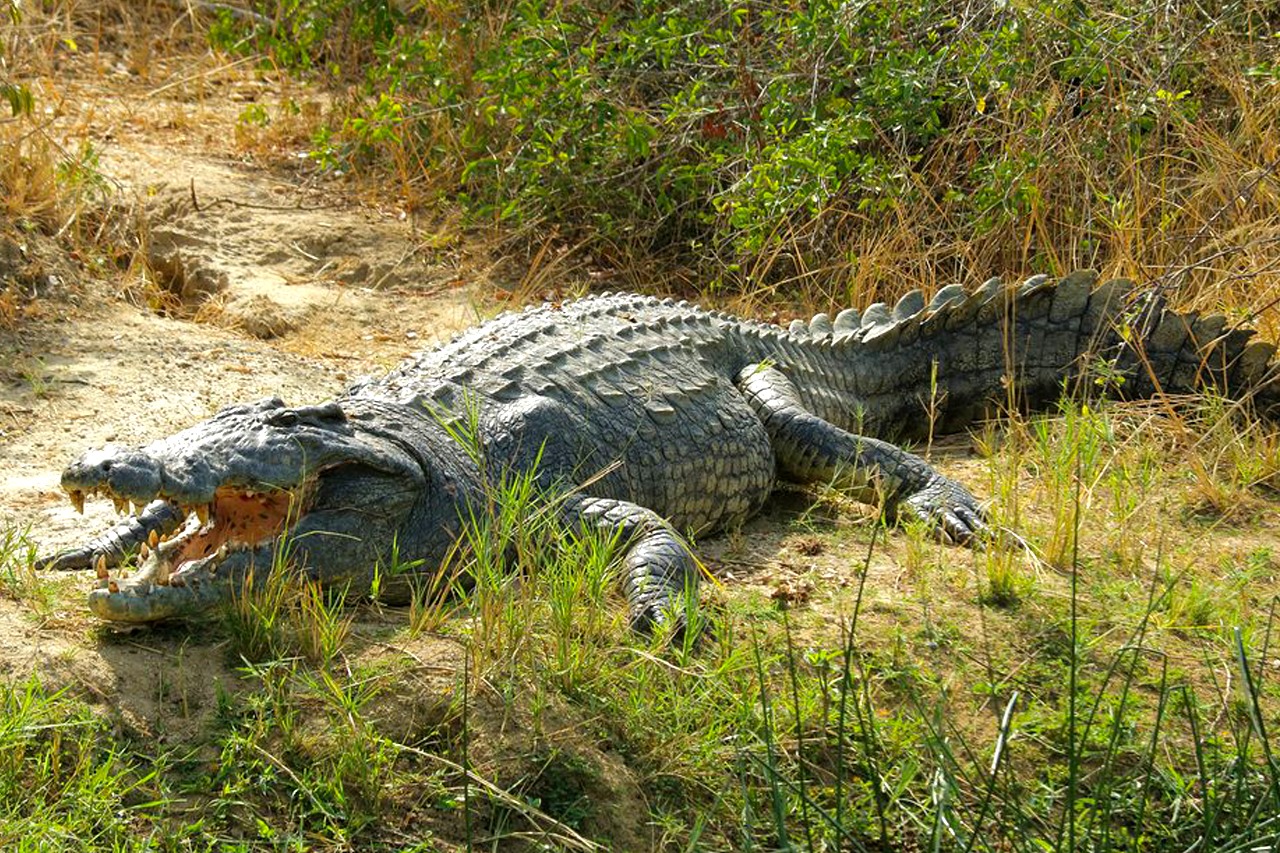
The Nile crocodile, Africa’s largest freshwater predator, thrives in Uganda’s rivers and lakes. The stretch of the Victoria Nile leading to Murchison Falls hosts particularly impressive populations, with some individuals reaching over 16 feet in length.
A boat cruise along the Nile offers excellent opportunities to see these ancient reptiles basking on riverbanks or gliding through the water with only their eyes and nostrils visible. The Kazinga Channel in Queen Elizabeth National Park is another hotspot, where crocodiles congregate alongside hippos and numerous bird species. Witnessing the explosive power of a crocodile strike or seeing dozens basking together is both thrilling and humbling.
8. Hippos
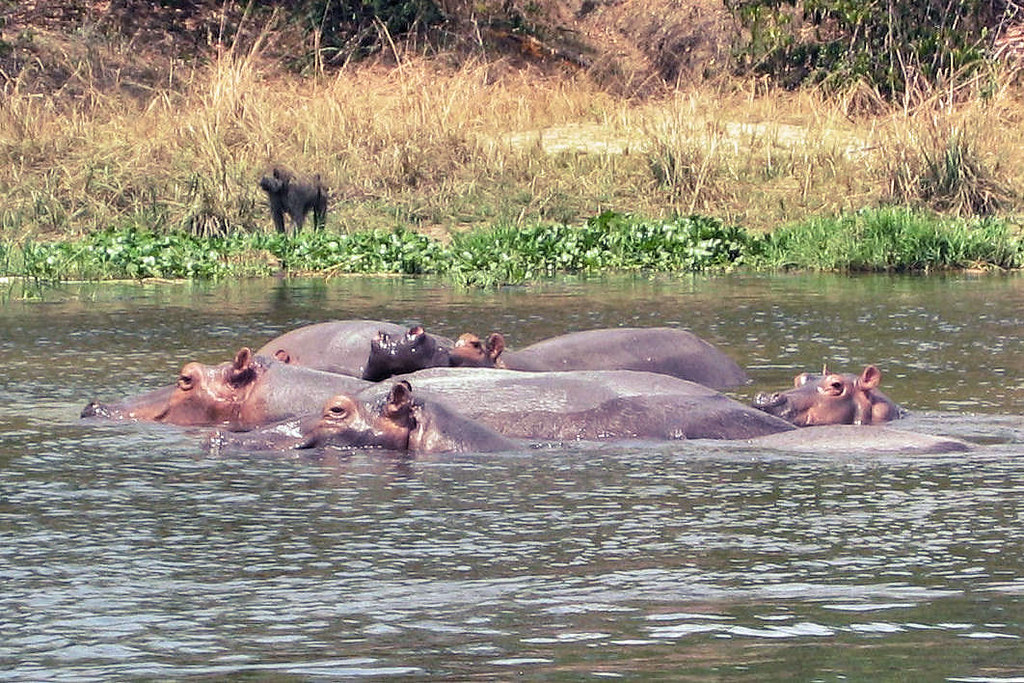
Uganda’s waterways teem with hippopotamuses, and these deceptively dangerous animals are a safari staple. Despite their seemingly docile appearance, hippos are responsible for more human fatalities in Africa than any other large animal, making respectful viewing from boats essential.
The Kazinga Channel boat safari in Queen Elizabeth National Park offers some of Africa’s highest concentrations of hippos, with hundreds of these massive mammals wallowing in the water. Watching their social dynamics, territorial displays, and surprising agility both in water and on land provides endless entertainment. Dawn and dusk are prime times to see hippos emerging from water to graze or returning from their nighttime feeding.
9. Golden Monkeys
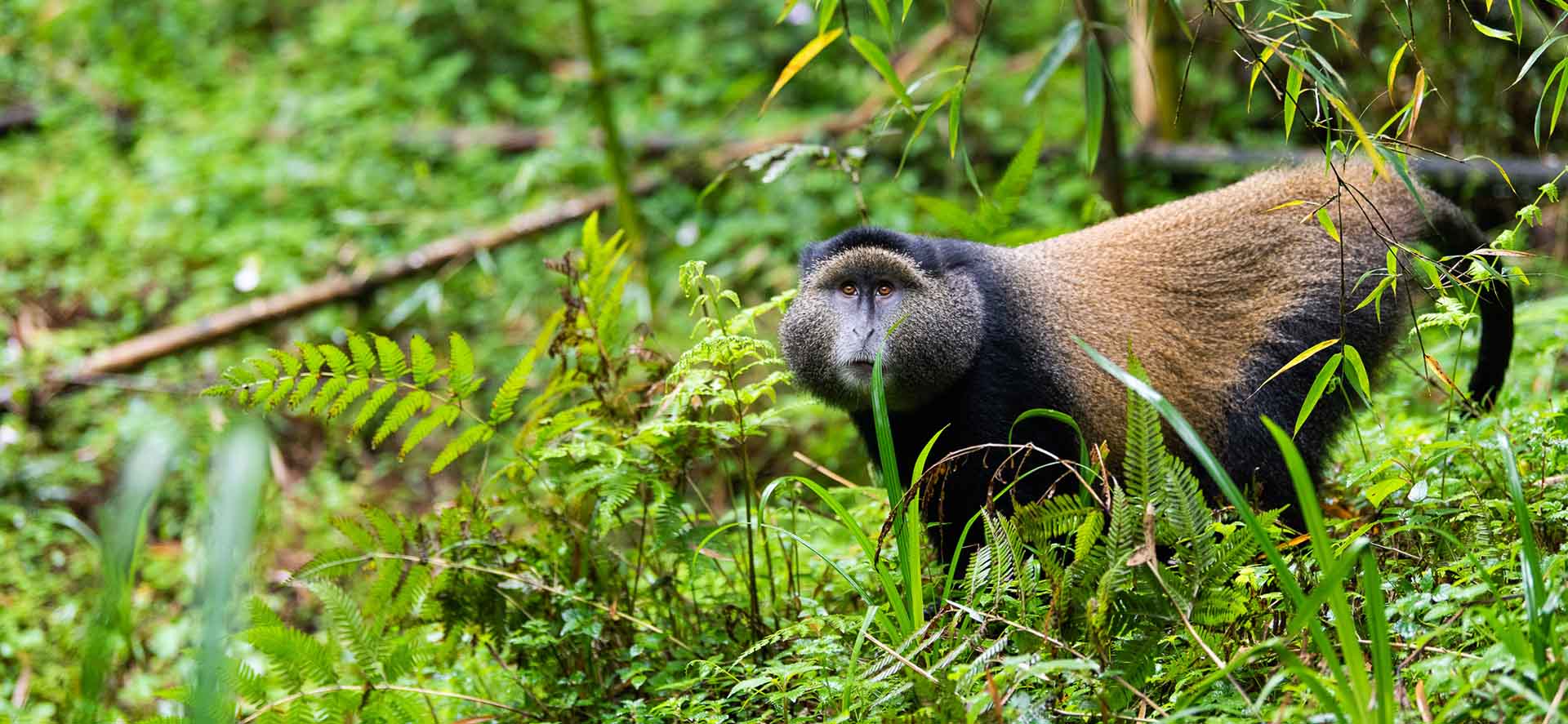
Found only in the Virunga volcanic mountains, golden monkeys are an endangered species that makes Uganda’s Mgahinga Gorilla National Park special. These beautiful primates, with their striking golden-orange fur contrasting against black limbs and faces, are playful and active, making for dynamic wildlife viewing.
Golden monkey tracking takes you through bamboo forests where these agile primates leap between trees with remarkable grace. Unlike the contemplative nature of gorilla encounters, watching golden monkeys is an energetic experience as troops of up to 80 individuals forage, play, and communicate with distinctive calls. Their curiosity often brings them close to human observers, creating memorable interactions.
10. African Leopards
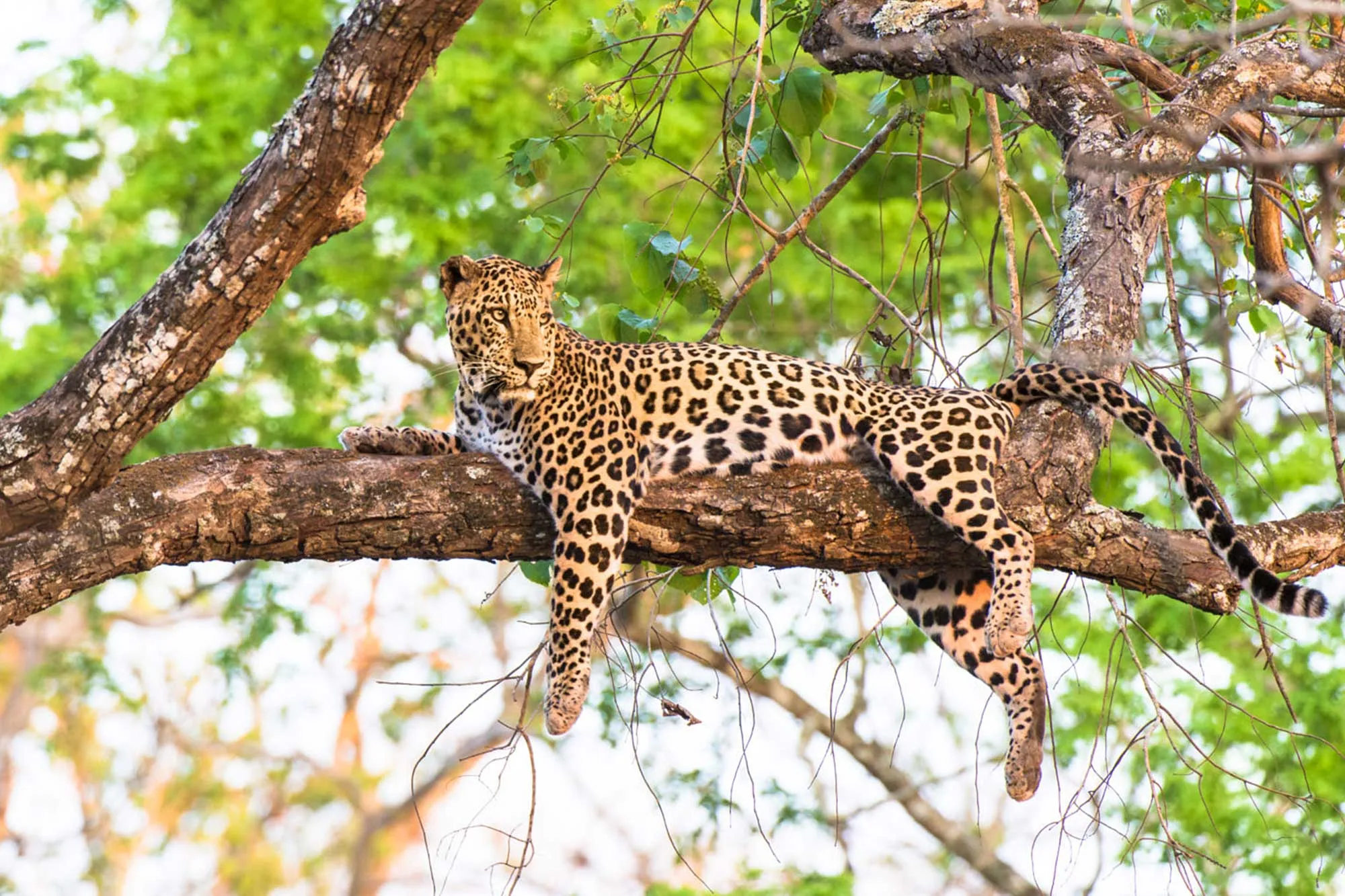
The elusive African leopard represents the ultimate safari challenge and reward. While these magnificent cats are notoriously difficult to spot due to their solitary, nocturnal nature and incredible camouflage, Uganda’s national parks offer legitimate opportunities for sightings, particularly in Queen Elizabeth and Murchison Falls National Parks.
Leopards are the most adaptable of the big cats, equally at home in dense forests, rocky outcrops, or open savanna. The thrill of spotting a leopard resting in a tree, the dappled sunlight playing across its rosette-patterned coat, or witnessing one on a night drive, its eyes reflecting in the spotlight, creates an apex safari moment. Even experienced safari-goers can spend years chasing leopard sightings, making any encounter truly special.
Planning Your Uganda Wildlife Safari
Uganda’s remarkable biodiversity means you can see many of these incredible animals on a single well-planned safari. The dry seasons from June to September and December to February generally offer the best wildlife viewing, though Uganda’s equatorial location means safaris are possible year-round.
Consider combining different parks to maximize your animal encounters. A typical itinerary might include Bwindi or Mgahinga for gorillas, Kibale for chimpanzees, and Queen Elizabeth or Murchison Falls for savanna wildlife. Each park offers unique ecosystems and wildlife experiences that together create a comprehensive picture of Uganda’s natural heritage.
The intimate nature of Uganda’s wildlife experiences, combined with smaller crowds than East African safari hotspots like Kenya and Tanzania, creates a more personal connection with these remarkable animals. Whether you’re watching mountain gorillas in misty forests, tracking chimpanzees through dense jungle, or observing lions in trees, Uganda delivers wildlife encounters that will stay with you forever.
Start planning your Uganda wildlife safari today, and prepare to check these magnificent animals off your bucket list while creating memories that transcend photography and storytelling. The Pearl of Africa awaits.
Contact us today for any inquiries or quote requests by simply emailing to info@mumwesafarisuganda.com or calling us on +256-700135510 to speak with the reservations team.

